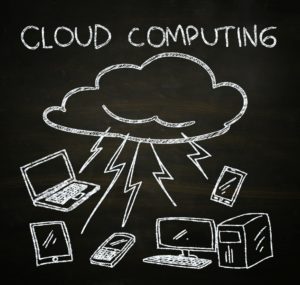 Using the cloud to store, share, and collaborate in the classroom is relatively new. A decade ago, accessing schoolwork from home was just about impossible. Now, it’s easy through sites like Google Drive and OneDrive.
Using the cloud to store, share, and collaborate in the classroom is relatively new. A decade ago, accessing schoolwork from home was just about impossible. Now, it’s easy through sites like Google Drive and OneDrive.
Mary Davis, a guest writer for Ask a Tech Teacher, specializes in cloud computing. Here are her thoughts on how cloud computing is transforming today’s education:
Cloud computing technology is certainly having its moment these days. Growing in popularity and with no signs of slowing down, the cloud is said to be the “way of the future”. In short, the access to online storage and applications that today’s cloud technology provides us with is significantly easier, cheaper and more secure than any form of memory storage in the past. This is of a particular importance to the way educational institutions are run, as it allows for a streamlined experience that can be more easily maintained by the teacher, the student, and the IT department.
The collaborative properties of cloud computing are appealing to both students and teachers. Gone are the days where group projects require huddling around one computer with the slowest classmate typing. Students can now collaborate with other students and teachers in real time, without necessarily even having to be in the same room.
A central aspect of rapidly growing and constantly evolving IT technology industries (like cloud computing or AI) is that they often create a gap between the supply and demand in skilled labor. This gap left certain companies – even some of the more financially powerful ones – unable to find experts to hire and fill these positions; this, in turn, leads to a collective corporate increase in the valuation and accreditation of online degrees, courses, and certificates, suddenly making it possible for people to complete a several month long online course (as opposed to 3-4 years of traditional university) and land a job with a significantly higher than average income in a respectable company. Thanks to e-learning platforms like Cloud Academy anyone can train on cloud computing and receive a cloud certification after completing the course, improving their chances of finding employment immediately.
The most vital reason for cloud computing’s introduction to education systems is that it allows cheaper access to materials. Not only are you able to say goodbye to printing (and save a few trees in the process), but institutions are also able to save money by not having to buy expensive software. Instead, they are able to subscribe to or download software at low costs. This also saves individual students and school districts money by not having to buy expensive textbooks every term. With cloud computing, students are able to access the most updated resources. This is important for school districts that do not have budgets for replacing textbooks every year. The average textbook is seven to eleven years old. This means that maps and entire countries might not be the same.
Another valuable goal of cloud computing is its reliability and portability. Students now have access to their work anywhere anytime. This allows for methods of education that cater to the student. For instance, one is able to rely on computers for a collaborative internet-based education. This allows people with less-traditional learning modes to achieve diplomas and GED’s.
Cloud computing has greatly changed the way people learn and teach. The effect on today’s education is boundless and truly changing the way education is shaped as well as how people communicate with their learning environment.
Mary Davis is originally from the UK but currently lives and works in Rome, Italy. She is a freelance writer and a CELTA qualified ‘English As a Foreign Language’ teacher, using technology to make learning English fun and interactive for her young students.
More on how technology transforms education:
3 Augmented Reality Apps to Take Your Lessons to the Next Level
The Importance of 3D Printing in Education
Jacqui Murray has been teaching K-18 technology for 30 years. She is the editor/author of over a hundred tech ed resources including a K-12 technology curriculum, K-8 keyboard curriculum, K-8 Digital Citizenship curriculum. She is an adjunct professor in tech ed, Master Teacher, webmaster for four blogs, an Amazon Vine Voice, CSTA presentation reviewer, freelance journalist on tech ed topics, contributor to NEA Today, and author of the tech thrillers, To Hunt a Sub and Twenty-four Days. You can find her resources at Structured Learning.





































Cloud resources in teaching industry is booming. It is helping us to cut down the cost and learn more. Thanks for sharing nice post.
My pleasure.
Thank you for the article! Such technologies change the present, and at the same time the future. I work for edusson writing , that is, I’m just using cloud technologies in my work constantly. But how do you think, can such a learning process become a problem for children in terms of communication? After all, in the classrooms, the main process was live communication.
Yes, definitely, but I don’t think we can put that toothpaste back in the tube. It’s too late to expect non-cloud-based communications. Our best bet is to blend it.